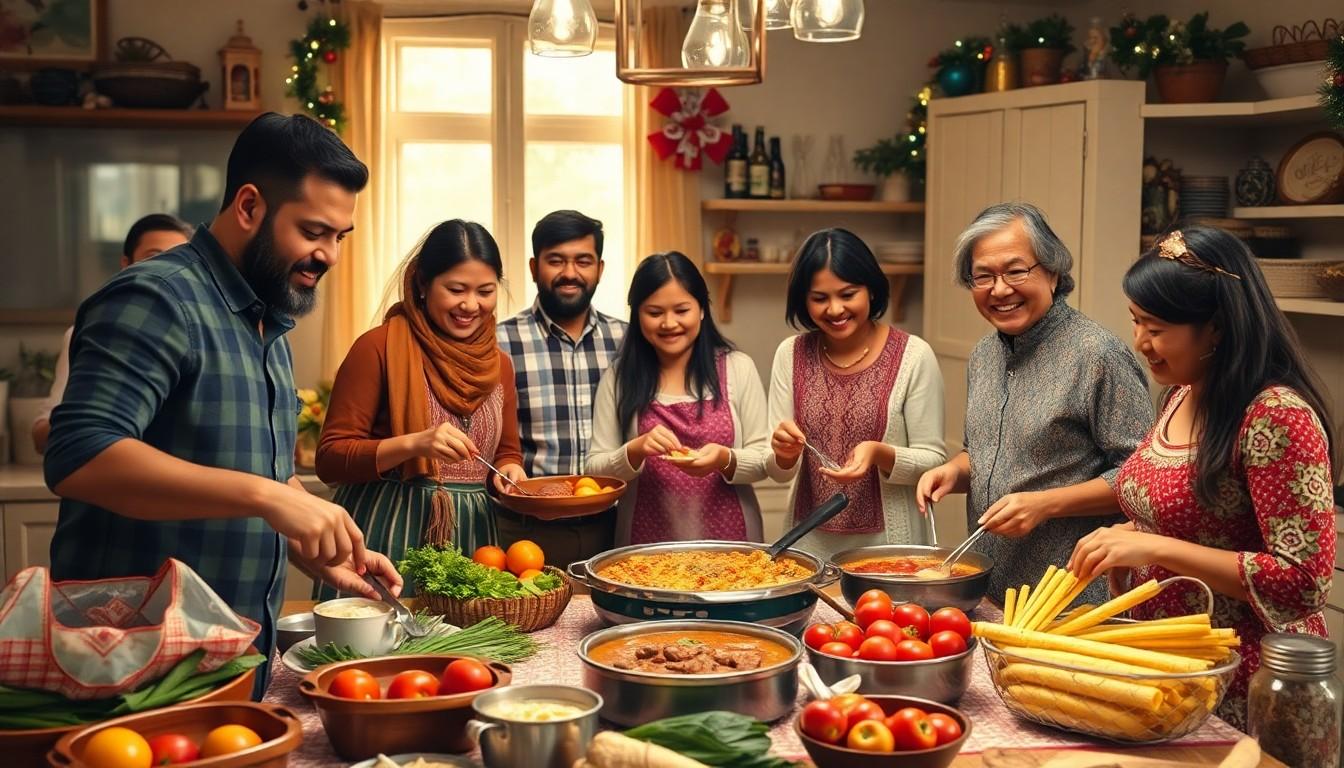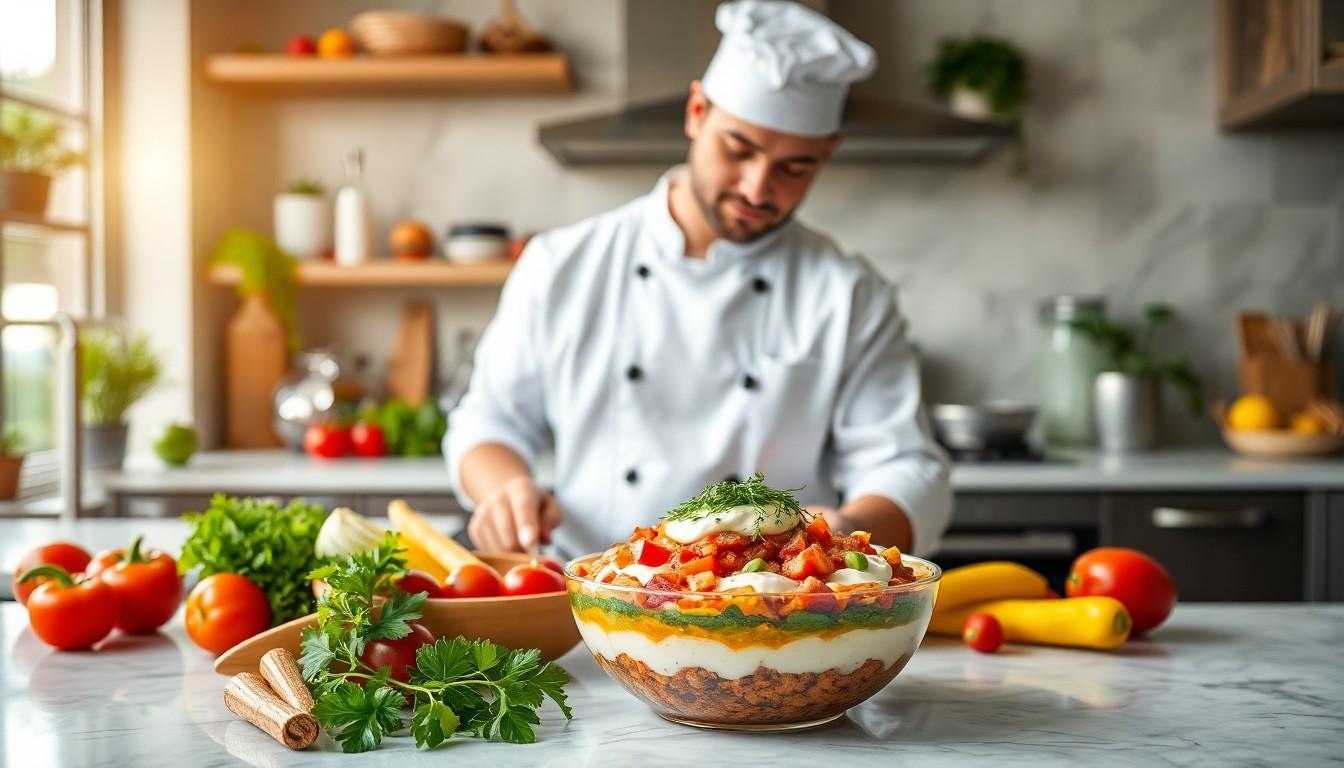Rasnkada is not just a dish; it’s an experience that dances on the taste buds and twirls in the heart. Imagine a delightful blend of flavors that makes your palate sing and your stomach do a happy jig. This culinary gem has roots steeped in tradition, yet it’s as modern as your favorite playlist.
Overview of Rasnkada
Rasnkada represents a unique culinary creation, captivating taste buds with its diverse flavors. The dish’s origins trace back to traditional cooking methods, incorporating aromatic spices and fresh ingredients. Throughout the years, it has evolved, maintaining its cultural significance while adapting to modern tastes.
Textures contribute to the overall experience of Rasnkada. Creamy elements balance the crunchiness of accompanying garnishes. Each component works together to create a harmonious blend, appealing to both seasoned enthusiasts and newcomers alike.
Preparation of Rasnkada showcases the artistry involved in its creation. Chefs carefully select ingredients, ensuring freshness and quality. The cooking process involves simmering, sautéing, and layering flavors, resulting in a dish that’s pleasing to the eye as well as the palate.
Cultural significance plays a vital role in Rasnkada’s popularity. Celebrated during special occasions and gatherings, it serves as a centerpiece that brings people together. Families often enjoy this dish, passing down recipes through generations, ensuring its legacy continues.
Consumers often find Rasnkada in many modern restaurants, reflecting its contemporary twist. The vibrant colors and enticing aromas draw diners in, creating an inviting atmosphere. Variations of Rasnkada now cater to diverse dietary preferences, enhancing its appeal in today’s culinary landscape.
Historical Significance

Rasnkada holds a prominent place in culinary traditions, blending rich history with cultural practices. It embodies a unique connection between generations, carrying forward flavors and techniques that define a community’s identity.
Cultural Background
Cultural roots trace Rasnkada back to family gatherings and festive occasions. Its preparation often features traditional recipes passed down through families, reinforcing community bonds. Many regional variations exist, each reflecting local ingredients and cooking styles. Celebrations utilize Rasnkada as a symbol of hospitality, emphasizing its role in bringing together friends and family.
Historical Uses
Historically, Rasnkada served both practical and symbolic purposes. It was traditionally prepared during significant life events, such as weddings and religious ceremonies. Economically, its ingredients were often locally sourced, showcasing the agricultural bounty of the region. This dish evolved as a celebration of seasonal changes, aligning culinary practices with the rhythm of local harvests. The historical journey of Rasnkada illustrates its adaptability while maintaining its essence, ensuring its place in contemporary dining experiences.
Benefits of Rasnkada
Rasnkada offers a variety of benefits that extend beyond its delightful taste. This dish embodies cultural heritage while contributing to health and well-being.
Nutritional Value
Rasnkada contains essential nutrients, providing a balance of carbohydrates, fats, and proteins. Ingredients like lentils and legumes deliver plant-based protein, aiding in muscle repair and growth. Fresh vegetables enhance fiber content, promoting digestion and maintaining gut health. Spices within Rasnkada, such as turmeric, contribute antioxidants that support immune function. Each serving is not only flavorful but also packs vital vitamins and minerals, placing it among wholesome meal options.
Health Benefits
Rasnkada supports overall health through various mechanisms. Balanced ingredients help regulate blood sugar levels, making it beneficial for those managing diabetes. Antioxidant properties derived from spices may help reduce inflammation, lowering the risk of chronic diseases. High fiber content promotes satiety, aiding in weight management. Many variations accommodate dietary restrictions, appealing to a wider audience. Families can enjoy Rasnkada while reaping its nutritional advantages, reflecting its flexibility in modern diets.
How to Use Rasnkada
Rasnkada is a versatile dish that adapts to various culinary preferences. It shines in both traditional and contemporary settings, enhancing flavors and nutrition.
Preparation Methods
Preparing Rasnkada involves several methods that enhance its flavors. Start by selecting high-quality, fresh ingredients that ensure taste. Sauté aromatic spices in oil to release their essence, then add vegetables and legumes, letting them simmer to develop depth. Layering flavors is crucial; each ingredient contributes to the final profile. Simmering the dish allows all components to meld harmoniously. Consider varying cooking techniques such as roasting vegetables for added texture or blending ingredients for a creamy finish. Each approach leads to a delightful Rasnkada experience.
Recipes and Serving Suggestions
Rasnkada offers endless recipe possibilities that suit various occasions. Serve it as a main dish alongside steamed rice or flatbreads for a fulfilling meal. Incorporate seasonal vegetables for added color and nutrition, making the dish visually appealing. Garnish with fresh herbs, such as cilantro or mint, to elevate flavors further. For a lighter option, consider transforming Rasnkada into a salad by including cooked grains and a tangy dressing. Casserole-style presentations work well for gatherings, allowing guests to serve themselves. The flexibility of Rasnkada ensures its success in any dining setting.
Where to Find Rasnkada
Rasnkada can be found in various places, from local markets to restaurants. Its popularity means it’s widely available, making it easier for enthusiasts to enjoy.
Availability in Markets
Fresh ingredients for Rasnkada are often available in grocery stores and farmers’ markets. Seasonal vegetables, lentils, and spices typically line the shelves, enhancing the dish’s flavors. Many ethnic grocery stores also offer unique ingredients, providing options for authentic preparation. Customers can find organic produce, supporting healthier eating habits. Prepared versions of Rasnkada may appear in specialty shops, catering to those seeking quick meals. The dish’s increasing demand keeps supply constant, ensuring availability across diverse locations.
Sourcing from Local Farmers
Local farmers play a key role in supplying quality ingredients for Rasnkada. They provide fresh vegetables and legumes, which contribute to the dish’s taste and nutritional value. Building relationships with farmers often leads to understanding seasonal variations in produce. Many communities host farm-to-table initiatives, connecting restaurants directly with local agriculture. Supporting local sourcing fosters sustainability and promotes regional flavors in Rasnkada. Chefs frequently visit farmer’s markets, choosing the freshest ingredients for their recipes, which enhances the dining experience for patrons.
Conclusion
Rasnkada stands out as a culinary gem that bridges tradition and modernity. Its rich flavors and textures create an unforgettable experience that resonates with both the past and the present. As a dish that brings people together, it embodies cultural significance while adapting to contemporary tastes.
With its nutritional benefits and versatility, Rasnkada fits seamlessly into various dining occasions, making it a beloved choice for families and food enthusiasts alike. Whether enjoyed at a festive gathering or a casual meal, Rasnkada continues to captivate palates and foster connections, ensuring its place in the culinary landscape for years to come.




